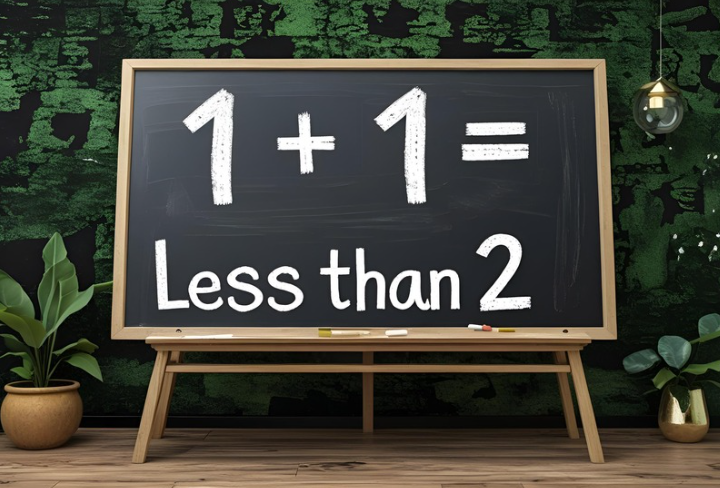Are you under-estimating the power of teams to shape the success of your organisation? If you have fallen into this trap, take some solace in the fact that you are not alone. Businesses succeed and fail by the performance and the motivation of teams and the talented individuals who lead and make up those teams. And when the situation is uncertain and work gets busy, it is easy for focus to move away from these key units of the organisation. Time is finite and so many things demand your attention but losing sight of the central importance of teams means that things can quickly disintegrate into low engagement and poor performance across the business.
At Exigence, we have spent years researching what makes teams successful, spending hundreds of hours observing and talking to teams, unpicking the good, the bad and the ugly, to create the most effective Team Coaching model; proven to maximise a team’s sustainable success in delivering their organisation’s key objectives in the shortest possible time.
Our Team Coaching model balances the collective unit that is ‘the team’ whilst keeping each individual in the team front of mind, ensuring they feel heard, respected and valued – motivated to give their team and their organisation the best of themselves, taking pride in their own performance and feeling invested in their team’s success.
How does Exigence’s Team Coaching model work?
Let’s be clear on what we mean when referring to Team Coaching, as this is where expectations can be misaligned and where what we do to help a team achieve dramatic and rapid results, is distinct from other team-focused activities.
It maybe helpful to start by delineating some activities that Exigence Team Coaching is not. For clarity, our team coaching is not:
- A team away day
- A team bonding session
- A keynote/motivational speech
- A training session
- A pity-party or whinge-fest
Exigence Team coaching is an evidence-based process, through which the performance of the collective (team) and individuals (team members, including the ‘nominal leader’) is assessed against current state, and then the gaps identified between the here-and-now with the desired end-state.
The fact finding and discovery is undertaken through a mixture of interviews and diagnostics. We map where the team is currently functioning, against where they would like to be, within the timeframe they’re considering, to help us all focus on the spaces for growth. We couple this interactive discovery with some direct observation – being a ‘fly in the wall’ at team meetings can be immensely insightful.
This powerful discovery phase means that, over a relatively short engagement in coaching terms – a period of a few weeks rather than a couple of years – we take teams from their initial view of where they need to be, to them delivering quantifiable impacts in the areas that really matter.
After benchmarking the current position of the team, the most important step is that everyone in the team is crystal clear on the Impacts the team exists specifically to achieve. Many teams report that they are fully aligned on this area, until we help them stress test those assumptions. If, say eight, senior leaders are just one degree out of alignment with their interpretation of the key priorities of the team, then by the time the next month, quarter, or year has passed, those leaders can be metaphorically miles apart. Getting this tight alignment on Impacts early in the team coaching process is vital.
Once that initial agreement around Impacts is completed, the team begins to work on three key elements – Identity, Leadership and Behaviours – in order to achieve the Impacts that the team has been charged with delivering.
Identity
Beginning with a conversation about the important areas to focus on, and the areas of growth, helps teams identify what kind of team it needs to be. There isn’t a right or wrong answer for any one team. This isn’t prescriptive. What it is, however, is an effective diagnostic that forces some time to be spent on those essential design questions. We’re not prescribing the developmental shape or the closeness of the bonded nature of the team itself, we’re focusing on what the collective needs to do to produce the required impacts. That’s quite a differentiator from other team coaching models.
For our model to be its most effective, we encourage a team to be ambitious – both in terms of the impact it wants to achieve and also in terms of the extent to which it could function optimally: A team that is interested in exploring those two possibilities, who is excited by the thought that, if they get it right, they could achieve something powerful.
Part of our job, as team coaches, is to stretch the team’s thinking around what’s possible, to the extent to which they could be creative and achieve something more significant that has broader impact than within their immediate surroundings; guiding them to a place where there is genuine dialogue through great conversations that unearth new and fresh perspectives.
The identity of a team is a collective of all of its individuals but your own individual identity is in part a reflection of the team, which is a really important dynamic. The closer that individuals can identify with the team, and the impact that that team is trying to bring about, the better. We find that these teams are quicker to get up to speed and deliver the impact that they are looking to achieve.
Let’s turn our attention to the second element: Leadership
Leadership
Leadership is the business of everyone in the team at some point, not just the formal, nominal leader. It’s about the balance between when the nominal leader needs to wield influence and when they need to invite the team to make decisions in a collaborative way. Stepping in and out, stepping back and stepping forward… this rotation is occurring all the time in a highly developed team.
It’s clear to see that, where a team has the mentality of, ‘this is your responsibility as a leader and this is my responsibility as a team member’ the team might perform well enough but they are held back in terms of their ability to overcome roadblocks and deliver significant impact.
Sometimes, we observe leaders who lead their own functional teams brilliantly yet, when in a peer group of leaders, sometimes step back from leadership and become followers all too quickly, when what the team needs is them to retain their leader mindset and apply it to their peer team.
By making the desired impact clear, we can help teams to define the nature of the leadership they want within their team, to help them deliver that impact. There’s an individual and a collective dynamic at play. What is your individual leadership contribution going to be? How are you going to collaborate with other leaders?
Behaviours
Every team is made up of real people who each show different leadership qualities, demonstrate their own leadership behaviours and project unique identities. All of these factors have an impact on the team. How it interacts with each other and with those outside their team. The balance of push and pull behaviours. How they manage conflict.
Some teams have overt conflict that actually discourages participation from some members of the team, or is unproductive in some way. That’s always an important area of behaviour to dig into with teams, and particularly for new teams – it is one of the hardest areas to get right, as trust has yet to be built. Trust is crucial. It’s about credibility, about being good at what you do, and whether you behave in a trustworthy way.
Sub-groups in teams are also key to understand. We know that productivity drops off when the number of people present for anything other than pure communication gets above four or five. So, how groups organise themselves in the current climate, where groups are often working remotely, and how they then check in with each other, both on a personal level and at a task level, becomes a really significant question.
How we guide teams into being more ambitious
A key element to the success of Exigence Team Coaching is providing the right apparatus to make sure there is action taken. There is a world of difference between being aware of something and actually changing it. The Exigence Team Coaching approach galvanises this shift from the knowing to the doing.
A questions we frequently ask during the process is, “What’s the shortest time and the least support that the team needs, to get to the next stage sustainably?” We often see that the leaders have the skillset to drive the performance of a team but welcome our external support to help them drive the development of a team quickly. Our model, that helps teams in transition to get up to speed rapidly, is simple in presentation but complex in its depth.
So, which teams are not quite where you and your business needs them to be? When you have identified those business critical teams you want to support to deliver impacts quickly we would be honoured to help you. Find out more here.





